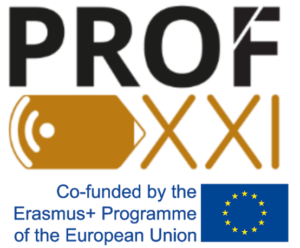On March 9th, the launch of the «Innova MOOCs» contest took place. This event was organized by Red CEDIA in Ecuador. Partners of the PROF-XXI project participated in the event, where they presented learning technologies aimed at the development and implementation of MOOCs.
At the beginning of the event, Dr. Juan Pablo Carvallo, the Executive Director of CEDIA, gave a welcoming speech and opened the event. Dr. Carvallo emphasized the contest’s objective, which is to promote the development of high-quality MOOCs in the country. He mentioned that the analysis conducted the previous year identified a very limited implementation of MOOCs and open courses. Therefore, this contest aims to:
- Promote the creation and widespread adoption of MOOCs in the country.
- Provide training to participants in appropriate techniques for creating effective learning materials.
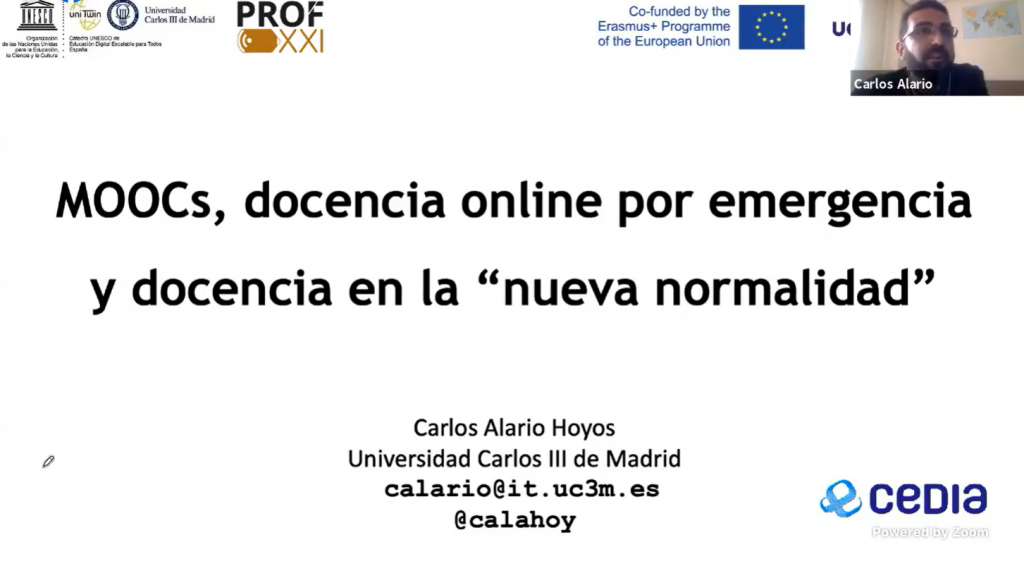
The event also featured a discussion on «MOOCs, Online Teaching in Emergencies, and Teaching in the ‘New Normal’,» presented by Dr. Carlos Alario Hoyos from the Universidad Carlos III de Madrid in Spain. During his presentation, he emphasized that MOOCs should be seen as an integral part of the education landscape, recognizing their life cycle, including the number of students, reusability, and objectives.
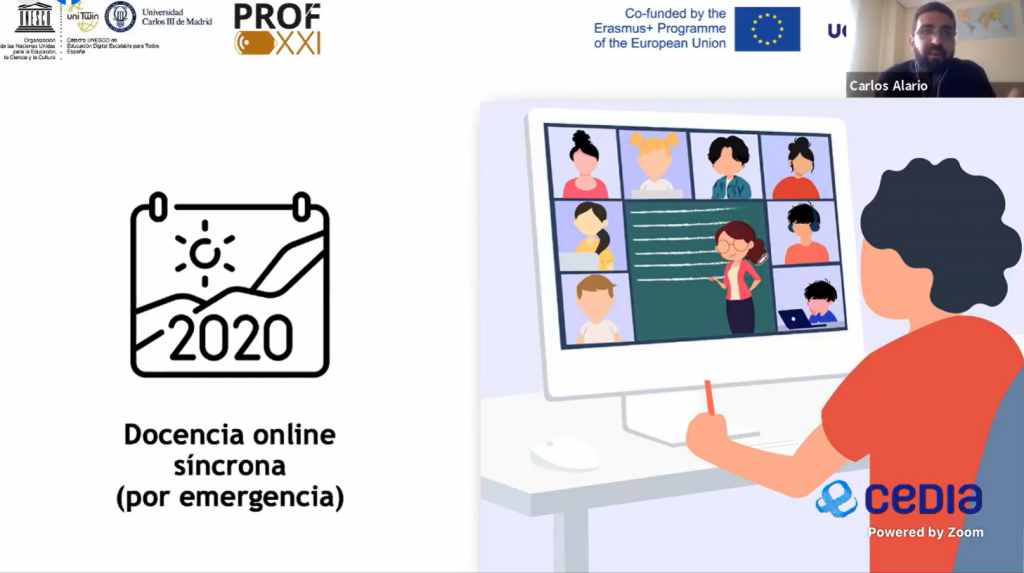
Before the «new normal,» there was low reliance on technology, primarily used for activities like motivation and interactivity. However, due to the emergency, there has been a shift toward «hybrid» synchronous digital teaching. This approach involves adapted face-to-face elements, efforts to reduce mobility, alternate schedules, alternate subjects, social distancing, online classes, and online assessment.
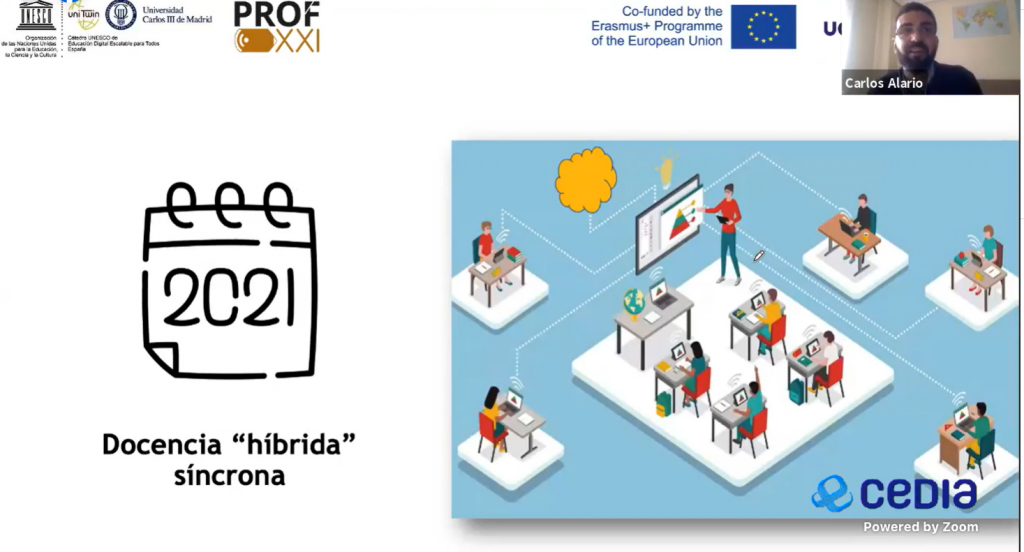
These discussions reflect the challenges and adaptations made in response to the changing educational landscape due to technological and pandemic-driven shifts in teaching and learning.
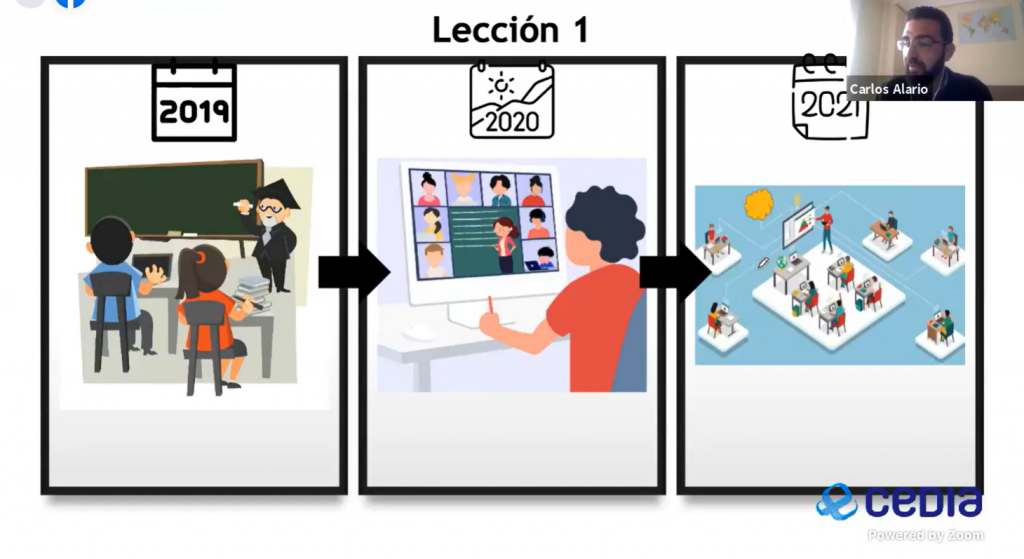
The second lesson, which is also the most significant one, is based on the teachers who had no prior experience but have managed to overcome the challenge and adapt to the technological leap. This adaptation has not been easy, but it has been implemented as a complementary aspect of teaching.

Numerical Data on MOOCs

According to statistics from Class Central, 2020 marked the second year of MOOCs (Massive Open Online Courses). The number of new users grew significantly during this year. This growth can be attributed to several factors, including the extended time that students had during the lockdown, the need for career transitions and acquiring new skills, and the increased demand for learning new tools and competencies.
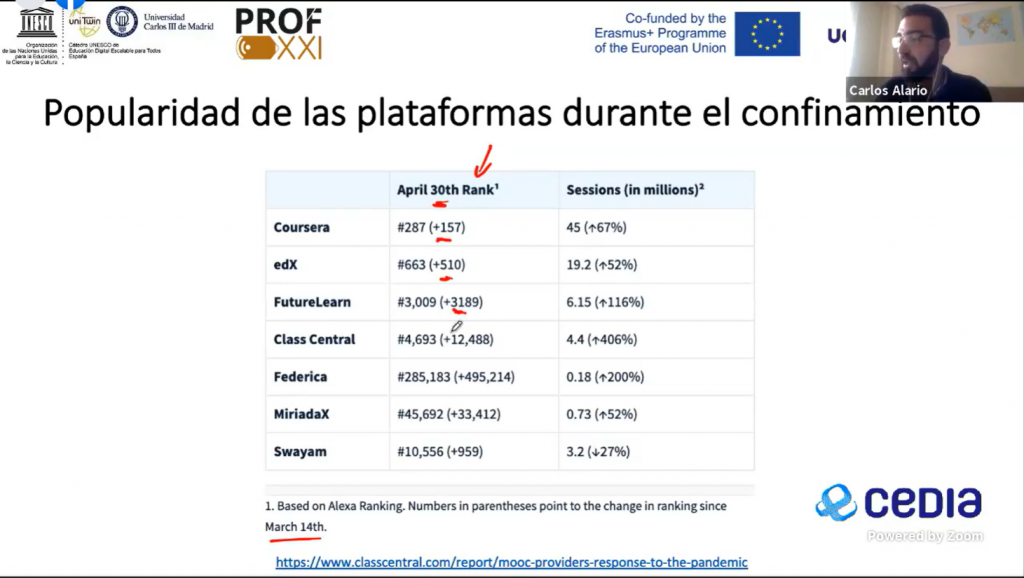
The growth in the number of MOOC users has also affected the use of platforms. These platforms have implemented several strategies to support effective academic continuity. These strategies include:
- Opening the catalog to other universities affected by the pandemic, allowing students to access the complete course content.
- Keeping course contents open for other universities, promoting collaboration and resource sharing.
- Offering MOOCs related to COVID-19 and specific training on topics related to the pandemic.
- Providing free certificates to encourage participation and completion of courses.

«Challenges presented in MOOCs in the new normal. «
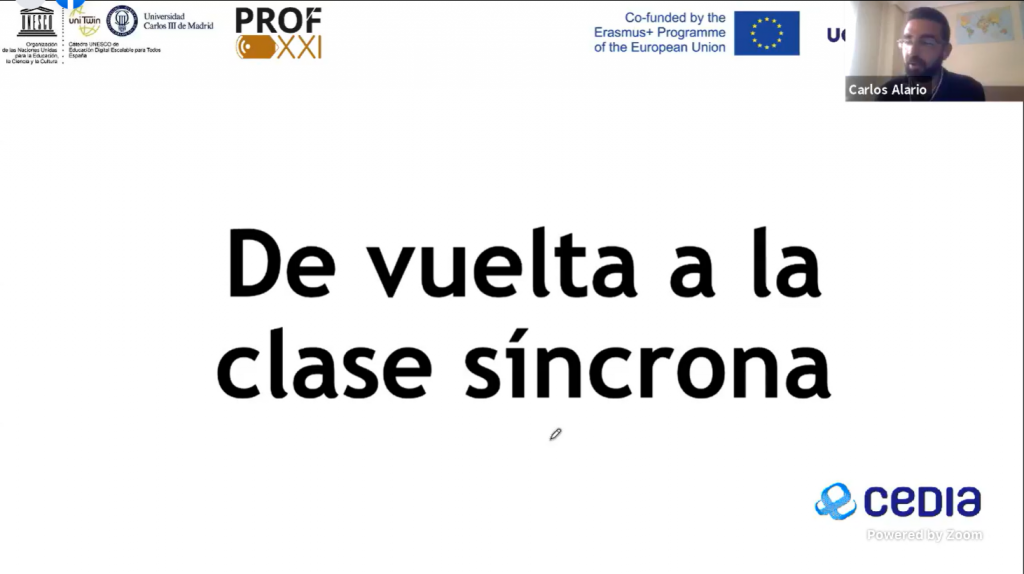
- Updating the content of MOOCs.
- Being able to prevent course dropout by implementing a sort of traffic light system to preempt student attrition in MOOCs.
- Identifying problematic assignments and proposing supplementary activities to help students navigate the course more smoothly.
- Applying targeted interventions to support self-regulated learning. Synchronous sessions with the instructor.
- Incorporating gamification elements as incentives.
Daphne Koller presents one of her latest initiatives regarding synchronous class improvement tools, which includes important features similar to Zoom and Blackboard Collaborate. This allows students the freedom to choose affinity groups during sessions and make annotations on the professor’s slides.»

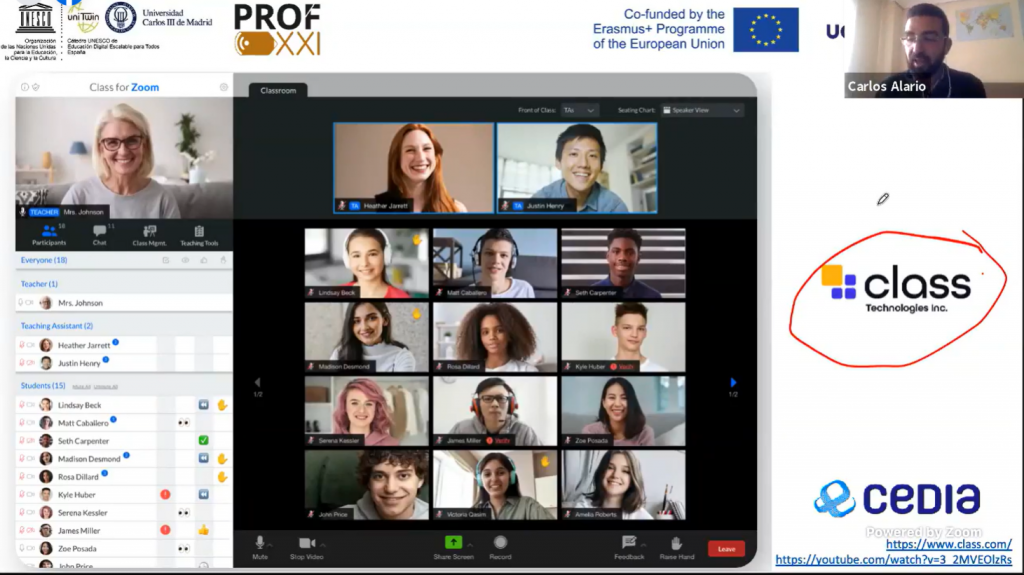
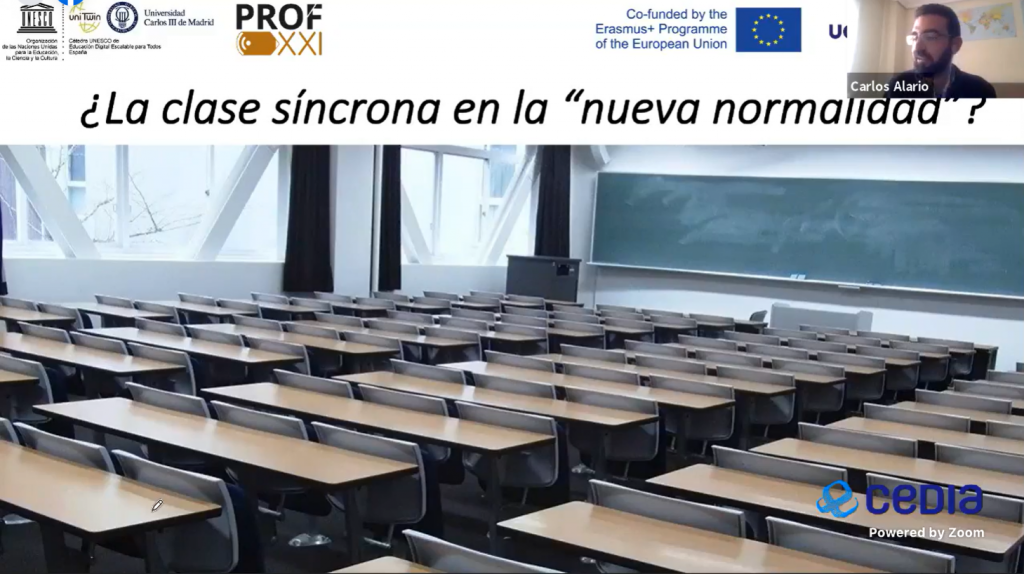



«Final Reflection»
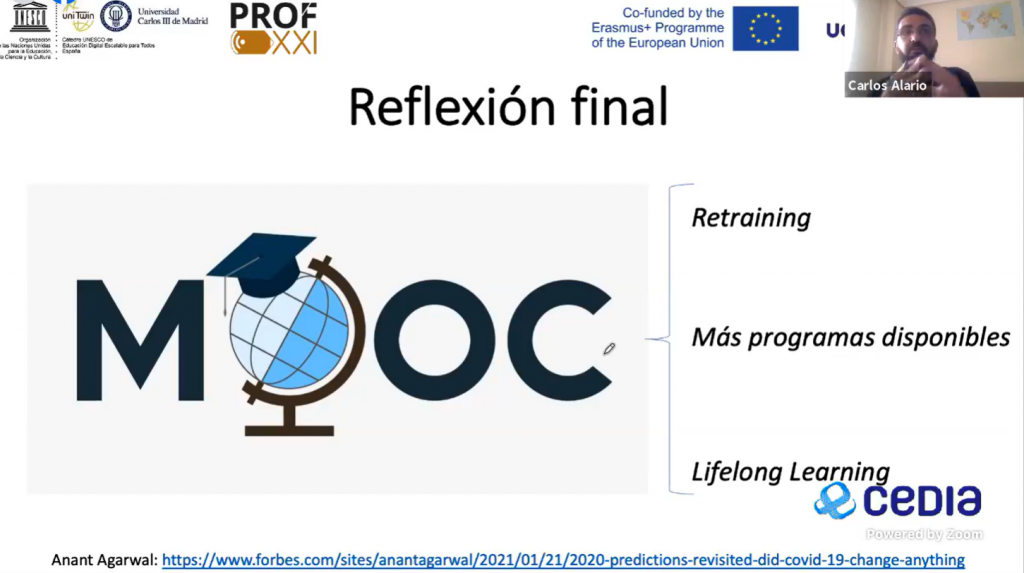
«The MOOC should not be seen in isolation; it is part of a larger puzzle. Among the three main purposes of using MOOCs in businesses, they have been used for employee training. In universities, they have enabled a greater number of accessible online degrees and postgraduate programs, as well as ongoing education and training based on personal interests. Another, but no less important, use of MOOCs is the outsourcing of postgraduate programs for professionals. The main strategy is the use of tools for hybrid teaching and their implementation in our MOOCs.
«Learning in the Age of MOOCs: Experiences and Best Practices»
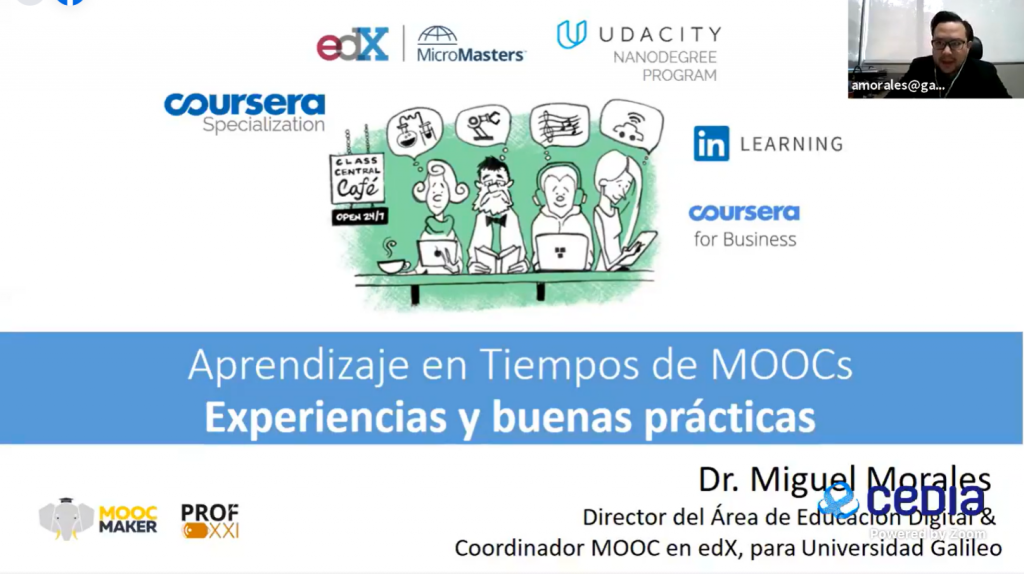
«Dr. Miguel Morales from Universidad Galileo (Guatemala) presented the topic ‘Learning in the Age of MOOCs: Experiences and New Practices.’ During his presentation, he addressed the following topics: The evolution of MOOCs, the experiences and best practices implemented during the design, implementation, and development process, and some important final considerations regarding the trend.
He also noted that there is no one-size-fits-all recipe for designing and implementing a MOOC, but this design has evolved over the years.»

«He emphasized that the first important insight is that many of the strategies used in universities for academic continuity during the pandemic have been implemented in the development of MOOCs.»

In 2017 and 2018, an increase in MOOCs was expected. Before MOOCs, the use of learning objects and online learning was already prevalent. However, in 2012, the term MOOCs was coined, and they have since been characterized by:
- Enhancing the teaching and learning process in higher education.
- There is a growing number of initiatives aiming to foster educational innovation projects within the context of MOOCs.»

Currently, the topics were originally oriented towards the scientific field, but due to the COVID-19 pandemic, the process of seeking new themes has allowed for diversification into various subject areas, with Humanities being one of the favorites.


Dr. Morales presented data related to the wide range of experience accumulated over time by Universidad Galileo. Currently, they offer 28 MOOCs, with 26 in Spanish and 2 in English, which have been implemented on various platforms and cover diverse subject matters, making them a global trend. He also mentioned the courses offered by the university that are known for providing academic credits for the continuation of postgraduate programs at the university.
How We Create MOOCs

MOOCs have been created including a series of short explanatory and descriptive videos, along with scripts, podcasts, practical exercises, quizzes, and as an assessment process, application projects that allow students to validate their learning during the MOOC’s development.
With the topic of MOOCs, a paradigm shift in higher education has been achieved, as it has been possible to unbundle education and create course modules or sequences that align course capabilities with those needed in the job market.
Experience in the Development of MOOCs.

Specific features in the development of a MOOC course include:
- Induction week: The goal is to provide support and orientation to new students in this learning experience.
- Videos or interviews.
- Downloadable content materials for online reference.
- Use of Web 2.0 tools to create spaces for interaction and collaboration during the teaching and learning process.
- Implementation of strategies for proper assessment.
- Courses do not have the same structure, as it can vary depending on the subject matter.
Best Practices

Next, Dr. Morales presented a series of best practices in the development of MOOC courses, one of the main ones being the use of simulators and remote laboratories that have been implemented and applied in regular university classes in subjects such as electronics, electricity, physics, and chemistry.
Use of Simulators and Remote Laboratories One of the main advantages of this practice is the promotion of active learning and providing learners with spaces for learning within a dynamic experimental ecosystem that is complementary and beneficial in the teaching and learning process in MOOC courses.

The simulation process has been carried out through downloadable repositories, allowing students to access the simulator and perform preliminary practices before engaging in projects. For this reason, it is essential for MOOC courses to have learning pathways that combine the use of resources.

Interactive Videos
The expert explained that they have diversified the types of videos using tools to make the learning process more interactive for students. This dynamic approach has been highly beneficial as it energizes the teaching and learning process and captures students’ attention.

Learning Activities with Web 2.0 Tools
Furthermore, he added that these tools allow for the supplementation of MOOC content and videos, enhancing the student’s learning experience and significantly contributing to reducing dropout rates.
He also suggested that by integrating Web 2.0 tools, they have achieved practical knowledge application, the inclusion of collaborative dynamics, and the creation of interactive spaces by students.
Use of Chatbots

They have been working on integrating a chatbot and artificial intelligence into the student experience in a MOOC course.
Learning Communities

The specialist emphasized the importance of promoting the development of a learning community, considering that students who participate in the courses continue to engage even after the course is completed. In these post-MOOC spaces, they share articles and relevant information. It has also been beneficial as it serves as a space to reinforce topics covered in class and address recent developments related to the subject matter.
Reuse MOOCs


Final Considerations Finally, Dr. Morales reflected on the idea that if MOOC courses focus solely on videos, we are emphasizing passive learning. He emphasized the importance of fostering participatory and active learning by the students.
From the initial course design phase, it is crucial to consider the students’ learning styles, with the main characteristic being the quality of instructional course design.
The instructional course design ensures quality right from the start, as it is essential to provide a range of resources and materials that enable students to learn.
The diversity of resources should be aligned with the didactic strategy and should be complemented with technology. It is important to remember that the correct sequence is design, strategy, understanding what to teach, how to teach, and what to do. Subsequently, technology is used to achieve the set didactic objectives.
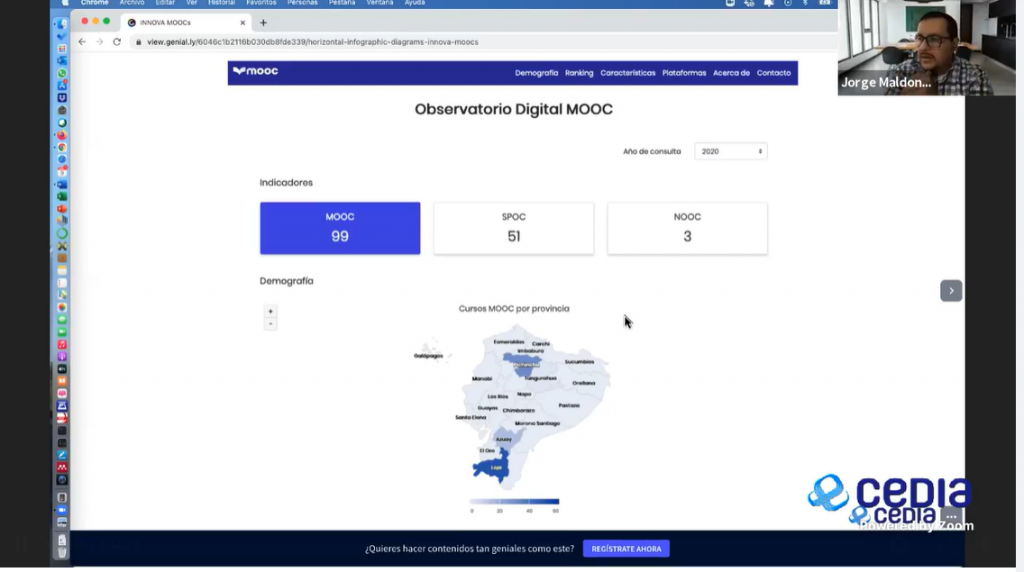
Presentation of the Innova MOOCs Competition by Red CEDIA (Ecuador)
Dr. Jorge Maldonado of the University of Cuenca (Ecuador) was responsible for presenting the objectives, guidelines, and structure of the Innova MOOCs competition in Ecuador.
He defined that the primary objective of this project is to show higher education institutions how to create high-quality educational materials, with a focus on the growing need in the country for the development of open, quality resources accessible to educational communities.

Innova MOOCs The main objective of this competition is to harness the participation of teachers and higher education institutions.
- Forming groups for publications and organizations.
- Encouraging free and innovative themes.
- Creating proposals for evaluation.
- What the MOOC course proposal would be.
- Identifying a high potential.
- How to use technology for the teaching and learning process.
Dr. Maldonado concluded his presentation by extending a warm invitation to higher education institutions, teachers, and those interested in the Innova MOOCs competition.


